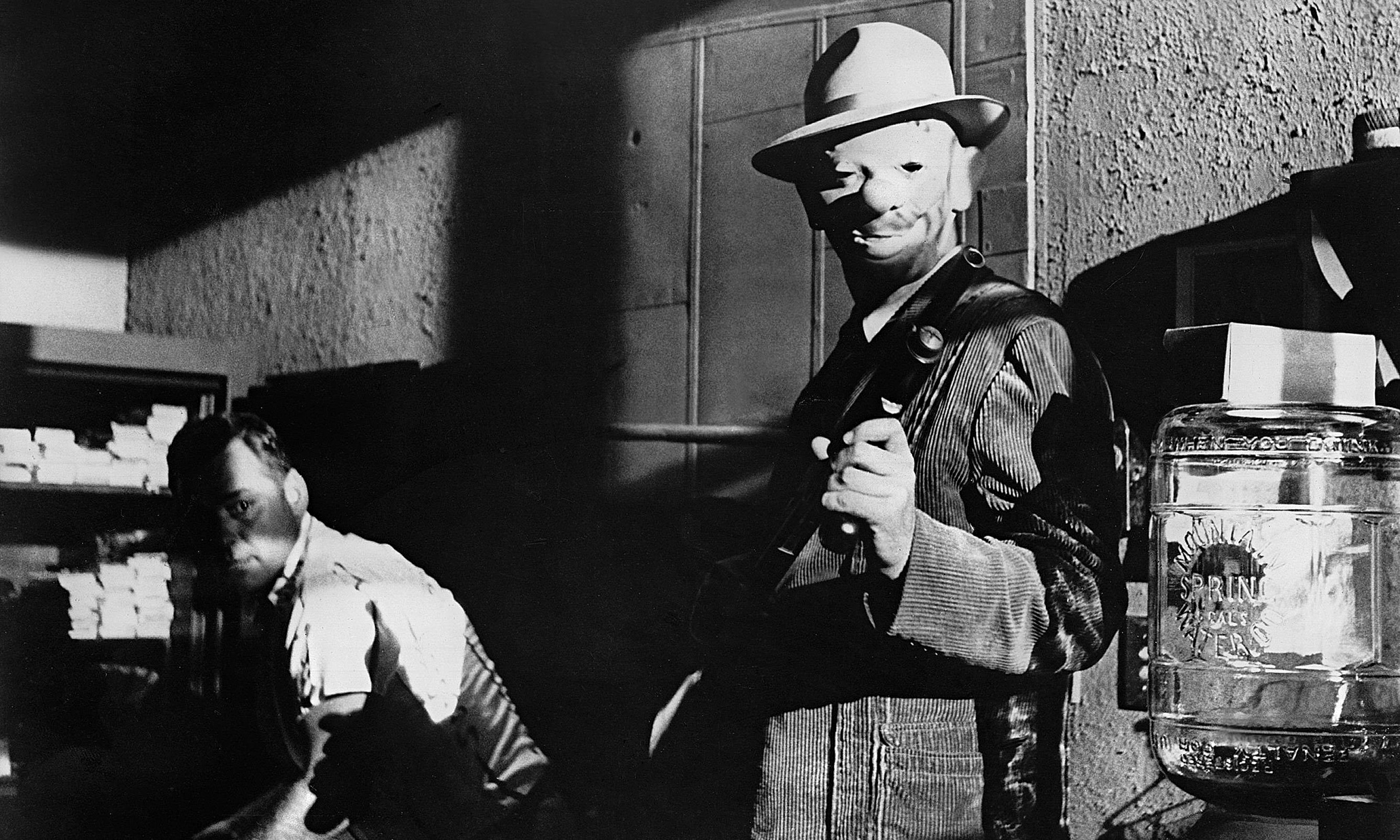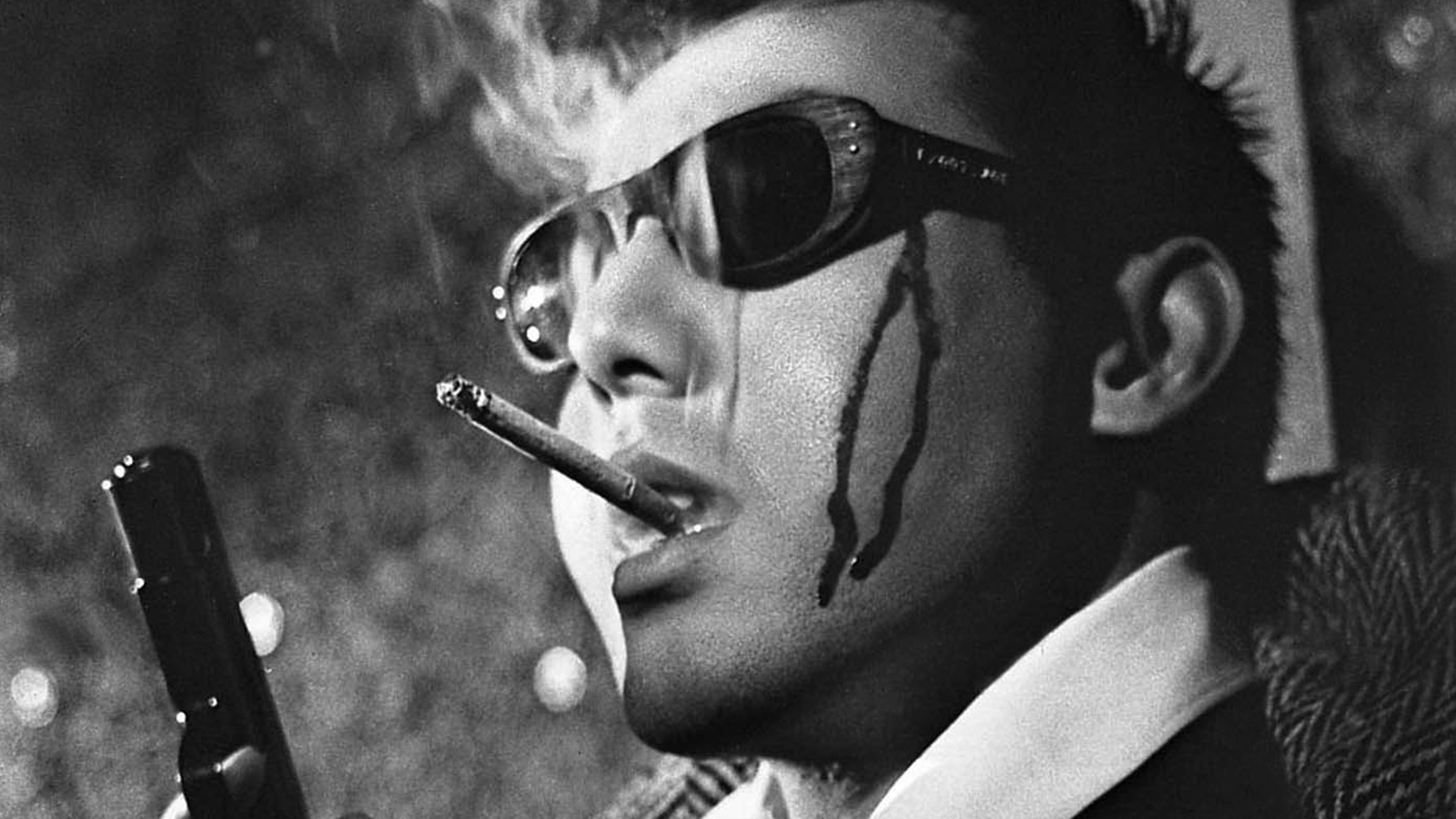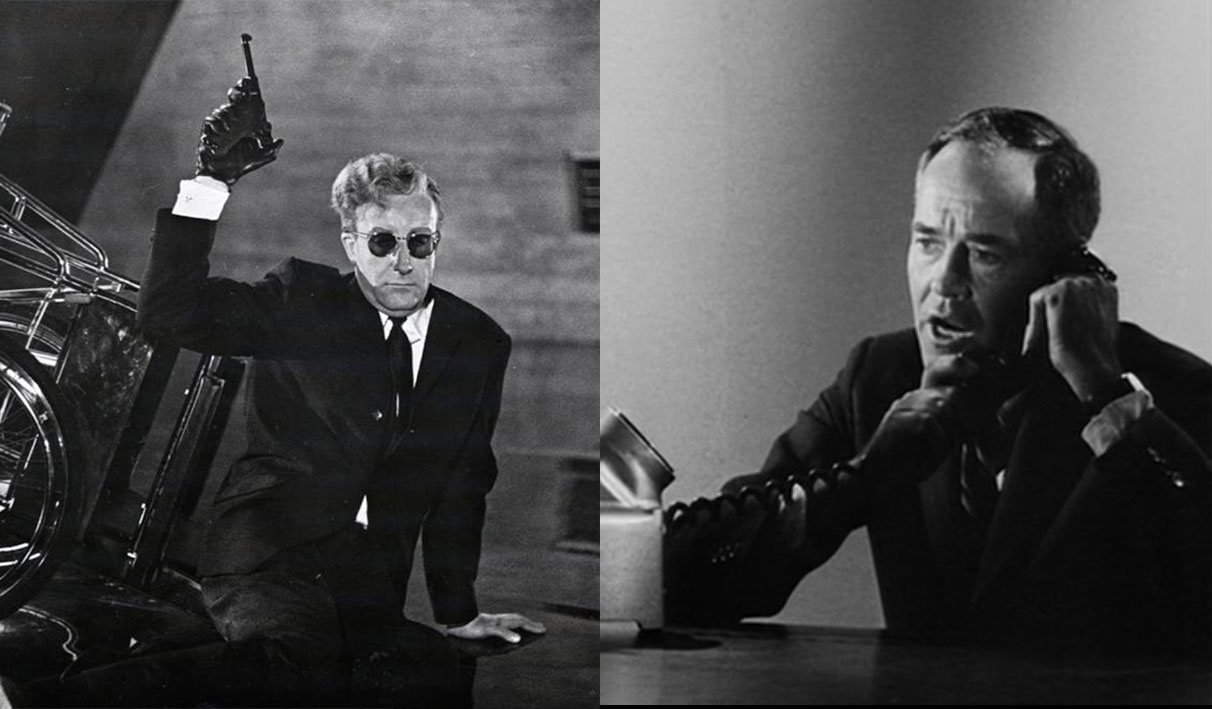The Killing (1956, Dir. Stanley Kubrick):
You have not yet learned that you have to be like everyone else. The perfect mediocrity. No better, no worse. Individuality is a monster, and it must be strangled in its cradle to make our friends feel comfortable. You know, I’ve often thought that the gangster and the artist are the same in the eyes of the masses. They are admired and hero-worshipped, but there is always present the underlying wish to see them destroyed at the peak of their glory.
The above line from Stanley Kubrick’s The Killing is uttered by an affable chess master and pontificator named Maurice (Kola Kwariani). Maurice also happens to be a monster of a man who can shake off a trio of cops with a simple shrug, a man who isn’t above accepting a few thousand dollars for a few minutes of dirty work that will land him in the slammer for sixty days. Kubrick himself was very much his own individual and far from being a mediocrity, but like Maurice, he was a chess master, and The Killing is a chess match of a movie in which everyone gets checkmated, and even a good pontificator can’t escape a dead end.
Fresh off his indie success in his second film Killer’s Kiss, Kubrick was ready to tackle a noir story head-on, and found one in Lionel White’s novel Clean Break. A simple heist plot juiced up with an intricate overlapping narrative, it was tailor-made for the director’s style. Up to that point, noir films had been either procedural, Dragnet-style affairs (“This is the city…”) or sweaty melodramas built on the aspirations of palookas and femme fatales. The Killing is more interested in the architecture of a best-laid plan, and how a beautiful edifice can crumble when bombarded by circumstance and an uncaring universe. All the usual noir tropes are there, but the tone — icy, austere, bemused — is all Kubrick.
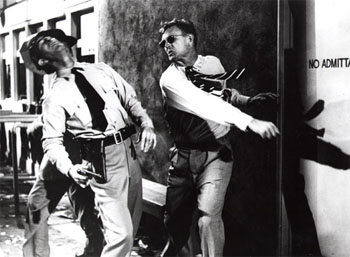 The story’s set-up is similar to classic heist movies like John Huston’s Asphalt Jungle (1950), in which a motley group of criminals assemble to plan a big score. One of the stars of Jungle, Sterling Hayden, headlines the cast as Johnny Clay; as his name implies, he’s a tough ex-con looking to re-mold himself and run away with his swell girlfriend Fay (Coleen Gray). Still, he’s not really a classic protagonist — his function is to be the mastermind who recruits a bunch of civilians and thugs in his quest to steal $2 million from the local race track. On his team are a bent cop who needs a big score to pay his mob debts (Ted de Corsia), a bartender at the track who requires dough to take care of his ailing wife (Joe Sawyer), a cashier (Elijah Cook) desperate to impress his philandering floozy of a wife (Marie Windsor), Clay’s rich, loyal-to-a-fault buddy Marvin (Jay C. Flippen), and perhaps most memorably, an unhinged sniper (Timothy Carey) who needs to shoot one of the racehorses at a critical moment (“That’s not first-degree murder. In fact it’s not murder at all. In fact I don’t know what it is,” Clay reassures him). Certainly the film has all the accoutrements of noir, down to the fleabag motels, the seedy pool halls, the dramatic cinematography, and a thunderous score by Gerald Fried (which would anticipate some of his later work on the Star Trek TV series), but our interest lies not so much in the characters’ fates as much as how well (or badly) Clay’s ambitious scheme will be pulled off. Directors like Huston and Fritz Lang knew that their characters were at the mercy of fate; Kubrick takes it a step further, breaking down the mechanisms of chance that doom the criminals’ plan before our eyes.
The story’s set-up is similar to classic heist movies like John Huston’s Asphalt Jungle (1950), in which a motley group of criminals assemble to plan a big score. One of the stars of Jungle, Sterling Hayden, headlines the cast as Johnny Clay; as his name implies, he’s a tough ex-con looking to re-mold himself and run away with his swell girlfriend Fay (Coleen Gray). Still, he’s not really a classic protagonist — his function is to be the mastermind who recruits a bunch of civilians and thugs in his quest to steal $2 million from the local race track. On his team are a bent cop who needs a big score to pay his mob debts (Ted de Corsia), a bartender at the track who requires dough to take care of his ailing wife (Joe Sawyer), a cashier (Elijah Cook) desperate to impress his philandering floozy of a wife (Marie Windsor), Clay’s rich, loyal-to-a-fault buddy Marvin (Jay C. Flippen), and perhaps most memorably, an unhinged sniper (Timothy Carey) who needs to shoot one of the racehorses at a critical moment (“That’s not first-degree murder. In fact it’s not murder at all. In fact I don’t know what it is,” Clay reassures him). Certainly the film has all the accoutrements of noir, down to the fleabag motels, the seedy pool halls, the dramatic cinematography, and a thunderous score by Gerald Fried (which would anticipate some of his later work on the Star Trek TV series), but our interest lies not so much in the characters’ fates as much as how well (or badly) Clay’s ambitious scheme will be pulled off. Directors like Huston and Fritz Lang knew that their characters were at the mercy of fate; Kubrick takes it a step further, breaking down the mechanisms of chance that doom the criminals’ plan before our eyes.
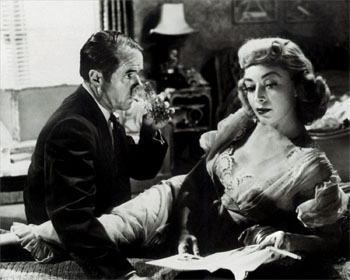 While Kubrick was known for being perfunctory with his actors — in his later films, they were useful to him only as distant figures in the landscape of a painting are useful — he would often allow hambones to strut their stuff (look no farther than Peter Sellers and George C. Scott in Dr. Strangelove, or Malcolm McDowell in A Clockwork Orange). In The Killing, he works with a who’s-who of noir royalty, and a few of them turn in career-best performances. Cook is famous for playing patsies and he’s pitch-perfect as the henpecked husband, but even he is surpassed by Windsor. Although she’s billed below Gray (who’s in the movie for all of five minutes), she inflates her supporting role to almost mythic proportions. She’s a monster all right, but a wickedly entertaining one, taking the time to spit into her mascara before applying it, while she makes the most of Jim Thompson’s pungent dialogue. “I keep getting pains in my stomach,” Cook whines; not interested in the slightest, she responds, “Maybe you got a hole in it. Do you suppose you have?” Naturally her accidental involvement with the scheme spells imminent disaster for all involved, and Clay has her pegged accurately from the get-go: “You’ve got a great big dollar sign there where most women have a heart.” As a capper, she exits the movie with one of the great kiss-off lines: “It isn’t fair. I never had anybody but you. Not a real husband. Not even a man. Just a bad joke without a punch line.”
While Kubrick was known for being perfunctory with his actors — in his later films, they were useful to him only as distant figures in the landscape of a painting are useful — he would often allow hambones to strut their stuff (look no farther than Peter Sellers and George C. Scott in Dr. Strangelove, or Malcolm McDowell in A Clockwork Orange). In The Killing, he works with a who’s-who of noir royalty, and a few of them turn in career-best performances. Cook is famous for playing patsies and he’s pitch-perfect as the henpecked husband, but even he is surpassed by Windsor. Although she’s billed below Gray (who’s in the movie for all of five minutes), she inflates her supporting role to almost mythic proportions. She’s a monster all right, but a wickedly entertaining one, taking the time to spit into her mascara before applying it, while she makes the most of Jim Thompson’s pungent dialogue. “I keep getting pains in my stomach,” Cook whines; not interested in the slightest, she responds, “Maybe you got a hole in it. Do you suppose you have?” Naturally her accidental involvement with the scheme spells imminent disaster for all involved, and Clay has her pegged accurately from the get-go: “You’ve got a great big dollar sign there where most women have a heart.” As a capper, she exits the movie with one of the great kiss-off lines: “It isn’t fair. I never had anybody but you. Not a real husband. Not even a man. Just a bad joke without a punch line.”
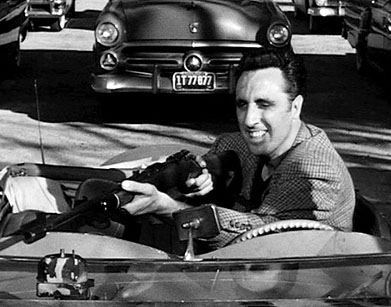 “I’ll take care of myself, mister — that’s my specialty.”
“I’ll take care of myself, mister — that’s my specialty.”
But in terms of gonzo performances, even Windsor has to take a back seat to Timothy Carey as the leering sniper Nikki. Squinting and grinning, his lines tumbling out in mostly-coherent hiccups, his head lolling on his shoulder, it’s one of the oddest turns you’ll see in a genre movie, and even though his encounter with a black parking attendant at the track (James Edwards) is merely an anecdote in the film’s grand scheme, their shared scene is as bracing a commentary on race relations as you could get back in the fifties. Kubrick pushes the envelope in other ways as well — Clay’s buddy Marvin advises him not to run off with Fay, going all homoerotic in the process: “Wouldn’t it be great if we went away, the two of us?”
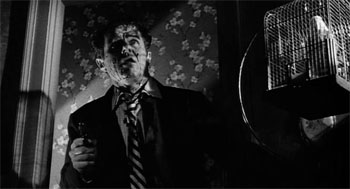 The elements that would dominate Kubrick’s future work — the stately wide shots, the fluid pans, the unforgiving close-ups — can be detected in The Killing, in a germinal state (Kubrick and his cinematographer, the great Lucien Ballard, clashed on set, but the resulting collaboration makes superior use of light and shadow). The film’s major innovation lies in its adoption of White’s plotting, in which the central heist is replayed several times, each loop seen from the perspective of a different participant. This kind of extravagance was groundbreaking for its time, and would be later appropriated by directors like Quentin Tarantino. (United Artists, fearing audiences would be lost within all the narrative switchbacks, forced Kubrick to add ham-fisted voice-overs to the film explaining what was going on.) The characters are reduced to cogs in the machine of Clay’s scheme, most of them kept kept in the dark as to everyone’s role, but as Clay’s plan spirals out of control, it becomes clear that Kubrick is the true author of the piece, seizing an omnipotent point of view with his fluid shifts in time and place.
The elements that would dominate Kubrick’s future work — the stately wide shots, the fluid pans, the unforgiving close-ups — can be detected in The Killing, in a germinal state (Kubrick and his cinematographer, the great Lucien Ballard, clashed on set, but the resulting collaboration makes superior use of light and shadow). The film’s major innovation lies in its adoption of White’s plotting, in which the central heist is replayed several times, each loop seen from the perspective of a different participant. This kind of extravagance was groundbreaking for its time, and would be later appropriated by directors like Quentin Tarantino. (United Artists, fearing audiences would be lost within all the narrative switchbacks, forced Kubrick to add ham-fisted voice-overs to the film explaining what was going on.) The characters are reduced to cogs in the machine of Clay’s scheme, most of them kept kept in the dark as to everyone’s role, but as Clay’s plan spirals out of control, it becomes clear that Kubrick is the true author of the piece, seizing an omnipotent point of view with his fluid shifts in time and place.
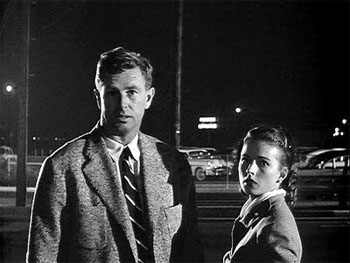 While we’re not asked to view The Killing as we would a typical noir production, we end up rooting for Clay and his compatriots because we root for the idea that we can control our destinies with the right combination of guile, timing and luck. It all concludes, as it must, with a cosmic joke, the film’s climactic shot of money billowing away in a gust of wind as despairing as anything Kubrick ever came up with. Still, The Killing comes off as a joyous declaration of Kubrick’s independence as a filmmaker and an ebullient exercise in genre cinema in its own right. While there’s no happy endings for the movie’s gang of thieves, Kubrick’s highly individual talent would triumph throughout the rest of his career, despite Maurice’s warnings. In the meantime, we can luxuriate in the film’s final flourish of dialogue. “After today, you’ll be a new man, a rich man… Maybe that’ll make all the difference,” Marv says to Clay at one point, and that line finds its counterpoint as Clay faces his fate, murmuring one of the best closers in all of noir: “What’s the difference?”
While we’re not asked to view The Killing as we would a typical noir production, we end up rooting for Clay and his compatriots because we root for the idea that we can control our destinies with the right combination of guile, timing and luck. It all concludes, as it must, with a cosmic joke, the film’s climactic shot of money billowing away in a gust of wind as despairing as anything Kubrick ever came up with. Still, The Killing comes off as a joyous declaration of Kubrick’s independence as a filmmaker and an ebullient exercise in genre cinema in its own right. While there’s no happy endings for the movie’s gang of thieves, Kubrick’s highly individual talent would triumph throughout the rest of his career, despite Maurice’s warnings. In the meantime, we can luxuriate in the film’s final flourish of dialogue. “After today, you’ll be a new man, a rich man… Maybe that’ll make all the difference,” Marv says to Clay at one point, and that line finds its counterpoint as Clay faces his fate, murmuring one of the best closers in all of noir: “What’s the difference?”
